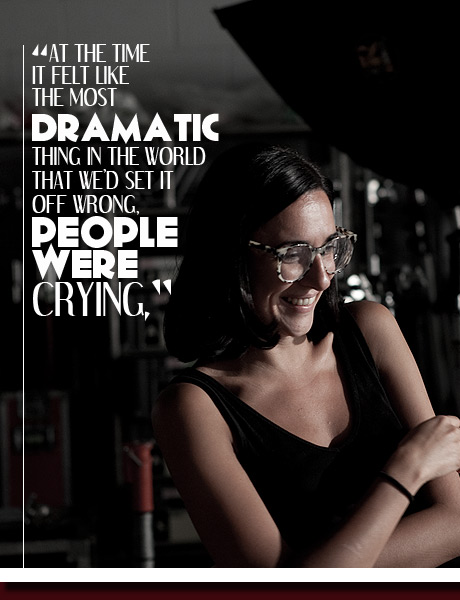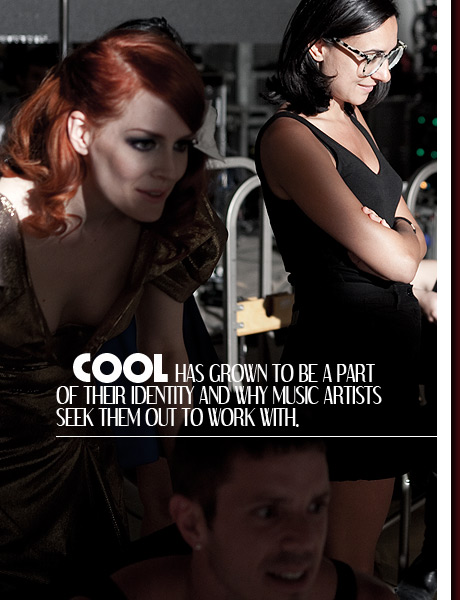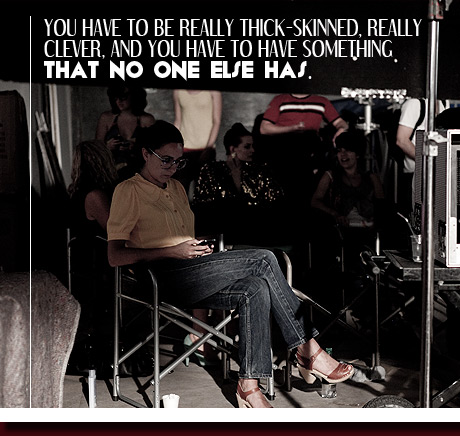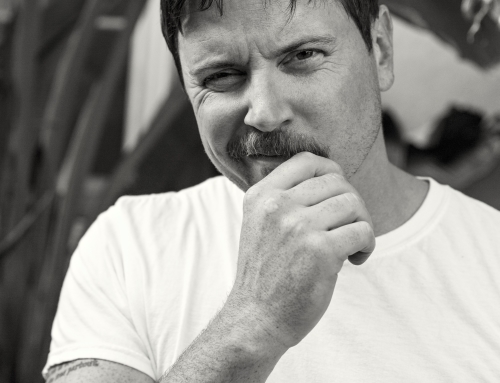Picture an abstract, storey-high apparatus housing singer Björk and a dozen extras. For one shot only, the machine begins to pull white rope, a rainbow of paint shooting over the entire canvas.
It’s the vision of your director that you’ve made come to life, a director who so happens to be your boss. Now picture the paint being sprayed prematurely, the shot blown along with the video’s entire budget.
This is the toil of Sasha Nixon, Executive Producer of Partizan Film’s music video department, the extraordinary love-laboured creations of the film industry.
“At the time it felt like the most dramatic thing in the world that we’d set it off wrong, people were crying,” says Nixon, the chief problem solver in this real-life scenario. “In the end the video worked and we caught up with the machine. But, you know, only he would create this environment.”
The architect of the fantastic device is Michel Gondry, who has wrapped a total of six Björk videos, and is notorious for his distortion of mise-en-scène in all the films he creates. His career breached from cult music videos such as the Chemical Brothers “Let Forever Be,” to lofty-budgeted commercials for Nike and Levis, to award-winning features like Eternal Sunshine of the Spotless Mind, all produced through the boutique production bureau.

Partizan has become synonymous with Gondry’s name, starting in 1991 at the dawn of his career. It has since been expanded to produce commercials, short films, movies and television shows, its latest venture, something called The Dark Room, handling non-traditional film projects. The mid-sized production company has won a variety of prestigious awards, including almost forty Cannes Lions, and a stack of Clios, MTV Awards, and Grammys.
Nixon, who is going into her sixth year with the company, went on the record this time last year stating that the music video industry had never been worse, feeling the clutch of the recession and the flop of the music industry all at once. The propulsion of internet sharing debilitated profits, seeping down into music video budgets, with major record labels dwindling.
“When I first started, there wasn’t even MySpace. I think I was aware of MySpace a year into working at Partizan,” Nixon explains of changes she’s weathered since taking on the department. But it also came as a new method of sharing, creating opportunities for advertising; something the music and film industries are finally catching up to.
Those problems seem like a different era now as Nixon’s explains the new undertakings of Partizan while sitting in their homey-Soho London office. The meeting room houses a large table littered with products for an upcoming commercial, and Nixon has been working late; she’s been turning out an average of two videos a week the entire summer.
She admits a level of snobbery when it comes to the videos she selects, and that it has been important to their company’s success. Cool has grown to be a part of their identity and why music artists seek them out to work with.
“We want our directors to either do a video because the music is fantastic and the band is worth getting into bed with, or because the money is good and you know the music is terrible. I can’t understand the reasoning to do a middle-of-the-road track with a middle-of-the-road budget,” she tells about the videos she puts forward to her directors.

It has become paramount for bands to consider the accompanying visual for a song, vital to the success of any band. On an international level, a video is how you hit everywhere. And with the democracy of the internet, judgement comes easy from the masses.

Above Images Courtesy of Sasha Nixon
“For a new artist, unless people come and see you live they are not going to see you at all unless you have a video,” points out Nixon. Videos naturally have a larger audience created by the internet. “Also, this is such an obvious example, but for the likes of Lady Gaga, her music is terrible but she’s interesting, and her videos are interesting. I don’t think anyone can say that the music will stand the test of time, but visually she’s much more edgy and avant-garde than she is musically. And by virtue of having videos we know that.”
As for the directors Nixon does work with, they’ve come by ways of creative fervour, rather than formal process. Kinga Burza originally came looking for a receptionist role at the Partizan office and was signed as a director after showing Nixon her reel. Surface to Air’s Rozan and Schmeltz were old friends of hers, and her latest discovery is Warren Fu.
”He nails every pitch that he does and his work is just so great,” says the savoir-faire producer of Fu who prides herself on scoring his talents. “He did two Julian Casablancas videos and I just assumed that he was signed, and then found out quite recently that he wasn’t and I was blown away, he was totally slept on. That was just from befriending him on Vimeo.”
Aspiring directors pine after the day that someone of Nixon’s cachet stumbles onto their work and asks to sign them to the company. But it’ll take more than just a good video to prove yourself; it’s just the beginning of the process.
“You have to be really tough. You have to be really thick-skinned, really clever, and you have to have something that no one else has. And be nice, because clients want to work with nice people, they don’t want to work with assholes. You are constantly having to ask people for favours, you are constantly having to charm people,” she explains.

As for producing, it’s something that Nixon intends to stick with. Some days requires a level of ingenuity that is beyond most people’s threshold, although Nixon is modest about the importance of her role in the process.
She has her eye on feature films, but, then again, apparently everyone in the industry does, the producer says. As she pauses to think of more stories she has from sets she’s been on, she says she’s more than content slumming it in the music video world.
“The Gondry shoot for Paul McCartney. It involved building a set of the scale that a feature film would, it was that level of art department. During the lunch break Paul McCartney and Michel Gondry started jamming together, Paul on the bass and Michel on the drums, because he’s a drummer. And it was absolutely …” Nixon is at a loss for words, but a candid grin breaks across her face. “I have such a good laugh, it’s like the best job in the whole world.”











